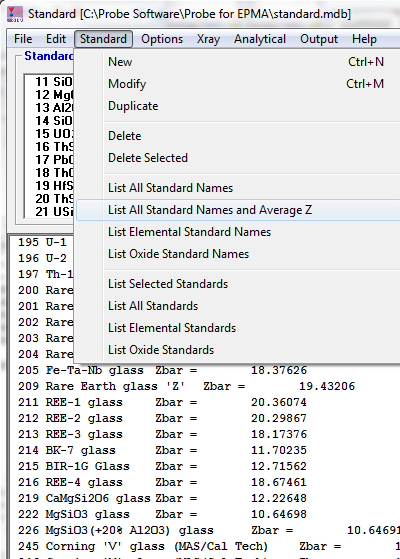I have a question regarding the collection of backgrounds for quant maps of a single phase e.g. Mg Calcite or Plagioclase- which we do often. In a single mineral backgrounds are constant & for majors peak to background ratios are high so background represents small percentage - making it tempting to ignore backgrounds. What we should do is MAN backgrounds the only reason we dont is to save time by not collecting standard data for standards which do not contain the elements. But I suppose the machine's pretty stable and we could just calibrate for MAN backgrounds every few months as larger errors for backgrounds would not matter? Have you thought about having an option were you could specify a single background in counts per second for the whole map - for this case were your mapping elements within a single phase e.g. here Mg-calcite for minor and trace elements - and the background could be specified for the map from a single quant point.
Hi Ben,
Good question.
Basically you want to do an MAN background calibration curve using a single point... which assumes of course that you have a constant composition (or at least a constant average Z which is essentially the same). However, as you point out, for major elements the background (if it is smaller than the measurement precision) can be ignored, or at least roughly approximated.
So here's an example of what to do if you wanted to say x-ray map (or point analyze) Ca and Mg on say dolomites that are (roughly) constant in composition. By the way, to include CO3 in the matrix calculation by various methods, see this topic:
http://probesoftware.com/smf/index.php?topic=92.0Let's start with adding Ca and Mg to a spectrometer and then go to the Acquisition Options dialog as seen here and specify that the standard acquisition use off-peak backgrounds but the unknowns (your dolomite point analyses or maps) use the MAN background. Here is the Acquisition Options dialog:
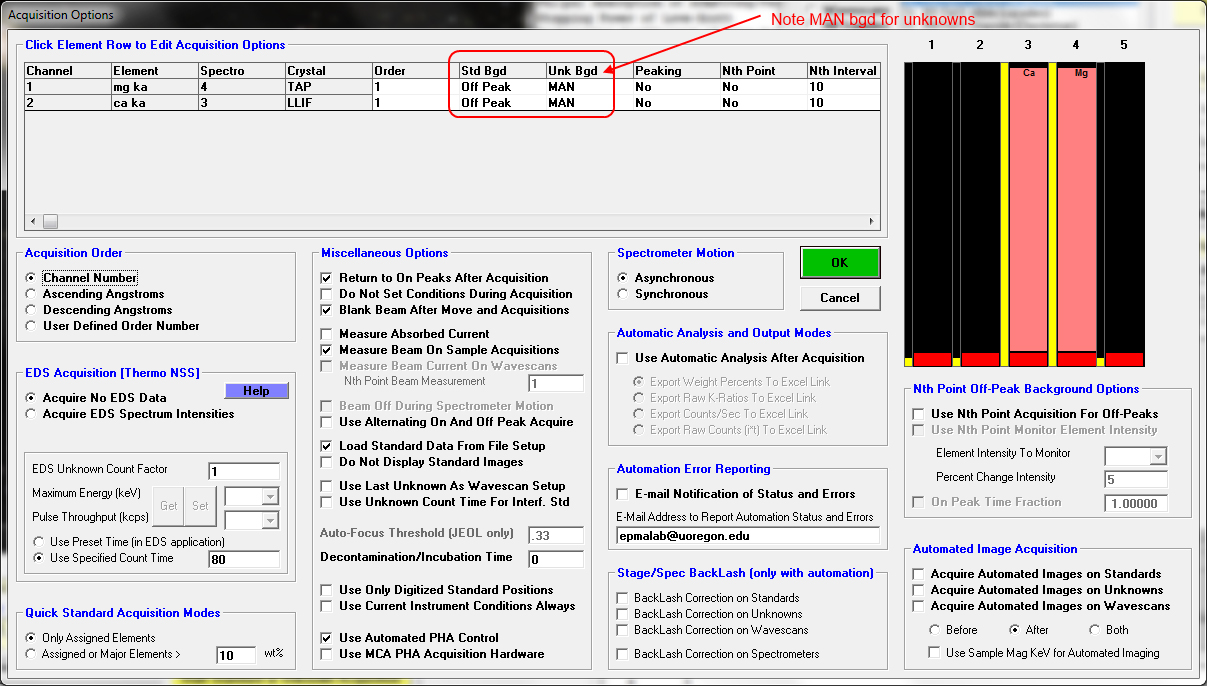
This gets more important as one starts to add additional elements to analyze for, but then one will have multiple standards that *do not* contain the element of interest and can therefore be utilized in the MAN calibration for variation in average Z!
Next we select our standard positions and run them:
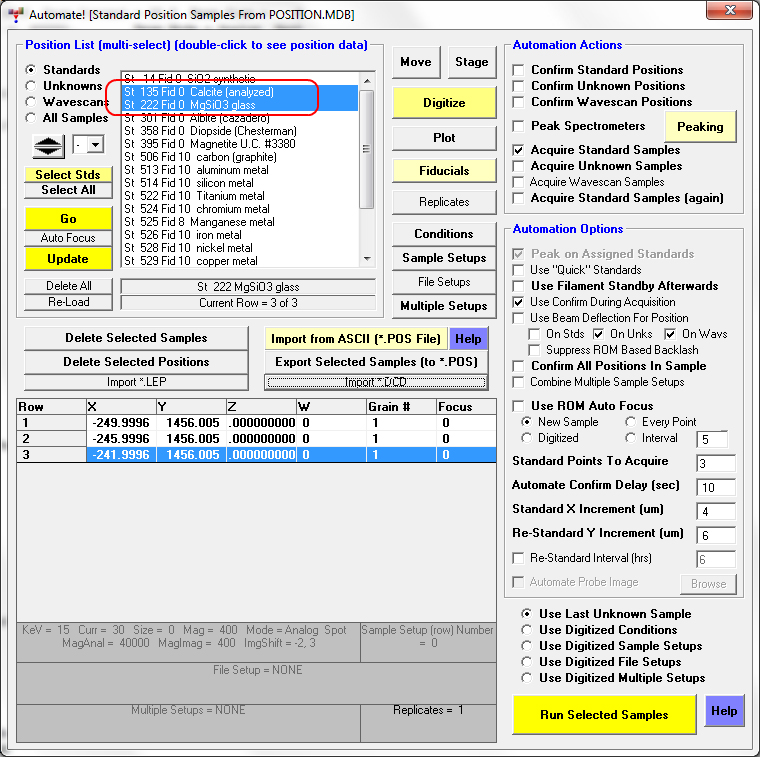
Once the standards are acquired we can analyze them as unknowns because we utilized off-peak backgrounds as seen here:
St 135 Set 1 Calcite (analyzed), Results in Elemental Weight Percents
ELEM: Mg Ca C O
TYPE: ANAL ANAL SPEC SPEC
BGDS: LIN LIN
TIME: 20.00 20.00
BEAM: 30.01 30.01
ELEM: Mg Ca C O SUM
1 -.017 40.141 12.000 47.952 100.076
2 .028 39.956 12.000 47.952 99.936
3 -.010 39.994 12.000 47.952 99.935
AVER: .000 40.030 12.000 47.952 99.982
SDEV: .024 .098 .000 .000 .081
SERR: .014 .057 .000 .000
%RSD: ---- .24 .00 .00
PUBL: n.a. 40.031 12.000 47.952 99.983
%VAR: --- (.00) .00 .00
DIFF: --- (.00) .000 .000
STDS: 222 135 0 0
Now we go to assign the MAN background for our unknowns using the Analytical menu as seen here:
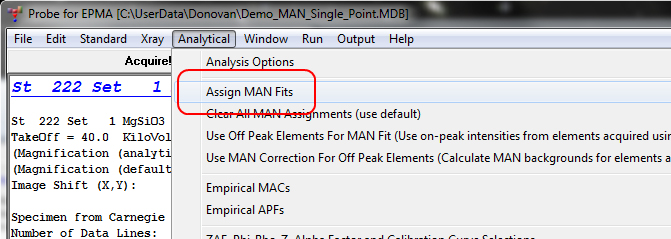
But whoa, we now get this error message:
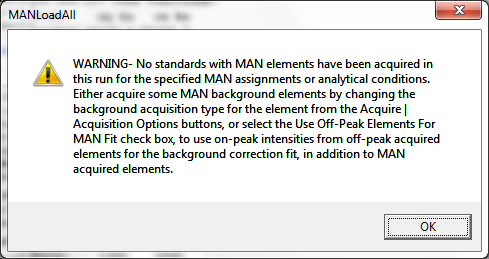
Why? Because our standards were acquired using off-peak backgrounds and so the program ignores the off-peak standards by default for the MAN calibration. So we can change that default by clicking this menu in the same Analytical menu as seen here:

Now we click the Analytical | Assign MAN Fits menu again and now we see this for the first element Mg:
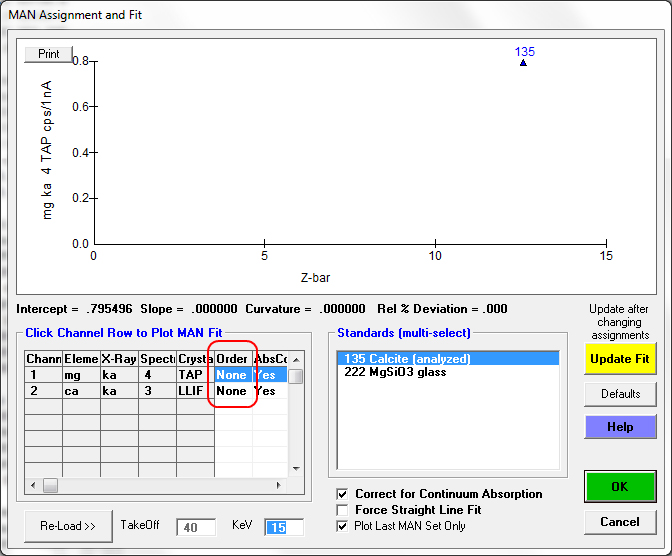
and this for Ca:
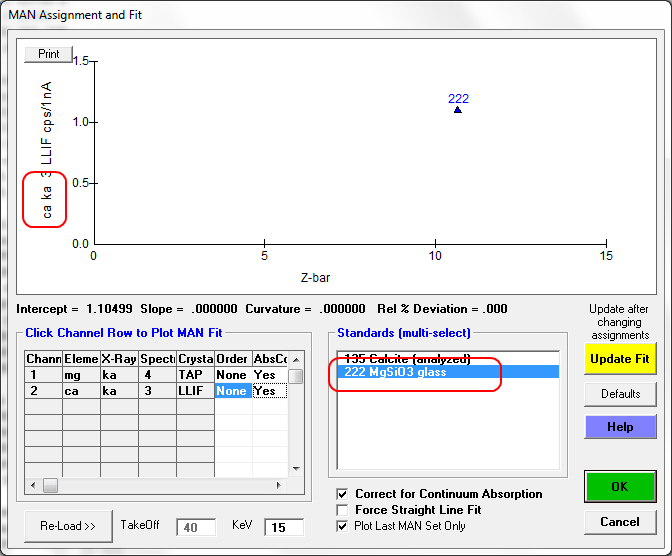
Yes, we're only using a single point for each MAN calibration curve so it is a constant background intensity for that element, but depending on what standard you pick you'll get a reasonable background estimate for major and maybe even minor elements. Or you could just acquire one or two more darn standards and get a proper slope for your MAN calibration curves!
Helpful hint: if you aren't sure which of your standards might have similar average Z values compared to your unknowns, you can use this handy menu the the Standard.exe app as seen here:
